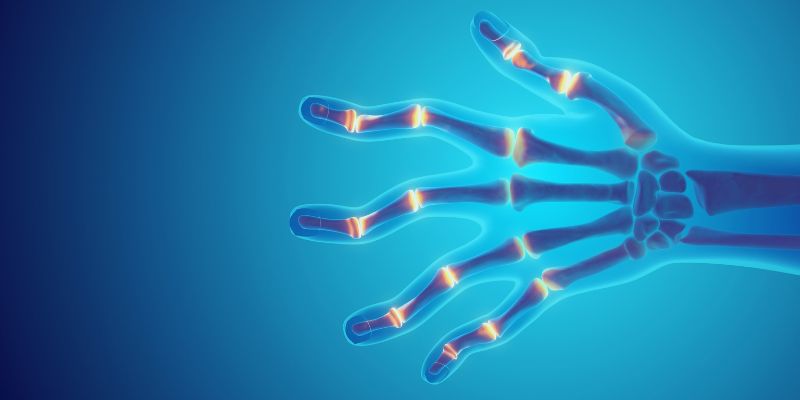Why Belly Fat Is The Shape Of Cardiovascular Risk: Everything You Need To Know
When considered visceral fat, belly fat is more than just a cosmetic concern. It seriously compromises health. This kind of fat surrounds important organs like the liver and heart. Visceral fat is active, unlike fat under the skin. It throws molecules that mess with hormones and aggravate inflammation. That fuels insulin resistance, lipid swings, and high blood pressure. These shifts over time increase heart disease risk.
The first step in controlling abdominal fat is knowing why it is harmful. This article clarifies the connection between abdominal obesity and cardiac condition and provides advice on how to cut this damaging fat. For your heart, little changes can have a significant impact. Let's look at how you may start to take charge of your health today.

What Is Belly Fat and Why Does It Matter?
Belly fat is stored in the abdomen. It manifests mostly as visceral and subcutaneous fat. Less harmful subcutaneous fat is found beneath the skin. However, visceral fat coats important organs like the liver and pancreas. This kind of fat speeds up the metabolism and causes signs of inflammation.
Visceral fat-caused inflammation adds to insulin resistance. It also reduces good cholesterol (HDL) and boosts bad cholesterol (LDL). This combo strains the heart. Furthermore, extra visceral fat affects metabolism and hormone levels. These elements make belly obesity a quiet but major threat to heart health.
How Does Belly Fat Affect Heart Health?
Belly fat immediately influences your heart; it does not only raise your waistline. Here's the approach:
- Increases Blood Pressure: Hormones made by visceral fat narrow blood vessels, increasing blood pressure and driving the heart to labor harder.
- Triggers Chronic Inflammation: Belly fat produces inflammatory molecules. These weaken blood vessel walls, thereby raising the risk of plaque development.
- Raises Blood Sugar Levels: Visceral fat is connected to high blood sugar brought on by insulin resistance. With time, this weakens the heart and destroys arteries.
Knowing these relationships emphasizes the need to lower belly weight. A stronger heart follows from a smaller waistline.
How Belly Fat Develops Over Time?
There are several reasons belly fat builds up. A bad diet is one of the main causes. Foods strong in sugar and saturated fats help store fat. The absence of physical exercise aggravates the problem. Fat usually settles in the abdomen when calorie consumption surpasses calorie burn. Hormonal changes are also important, especially in middle age.
For women, decreased estrogen levels, for example, can cause more belly fat following menopause. Another factor is stress since it sets off cortisol, a hormone connected to fat storage around the abdomen. Finally, your body stores fat where it belongs based on your genes. If close relatives have more abdominal fat, you may be inclined to do so—still, lifestyle adjustments help reduce this risk.
Why Belly Fat Raises Cardiovascular Risks:
Belly fat does not merely lie in your abdomen and wait about. It contributes actively to health issues. That affects cardiovascular health as follows:
- Triggers Chronic Inflammation: Visceral fat produces pro-inflammatory molecules. These substances compromise blood vessel walls, increasing their susceptibility to plaque development. Over time, this can induce atherosclerosis, a main contributor to strokes and heart attacks.
- Increases Insulin Resistance: Extra abdominal fat messes with insulin metabolism in the body. The development of type 2 diabetes depends much on insulin resistance. Diabetes, therefore, greatly increases the likelihood of heart disease.
- Alters Blood Lipid Levels: Belly fat raises triglycerides and LDL cholesterol levels. It also reduces HDL cholesterol, facilitating fat clearance from the bloodstream. The heart and arteries suffer especially from this disparity.
Signs You Have Unhealthy Belly Fat:
Although most belly fat is benign, it's important to know when unhealthy visceral fat is present. Watch for these:
- Waist Size Above Recommended Limits: A waist circumference above forty inches should alarm men. For ladies, the cutoff is 35 inches.
- Apple-Shaped Body: Your visceral fat levels may be higher if your body stores most fat around the stomach instead of the hips.
- Difficulty Losing Weight Despite Efforts: Food and exercise should not lower your abdominal fat; this could point to hormonal or metabolic abnormalities.
- Presence of Other Health Issues: Excess abdominal fat often accompanies conditions including high blood pressure, prediabetes, or high cholesterol.

How to Reduce Belly Fat and Lower Risk:
Improving general health mostly depends on addressing belly fat. These are some tested techniques:
- Adopt a Healthy Diet: Eat many foods high in fiber, such as veggies, fruits, and whole grains. Steer clear of refined carbohydrates and added sweets to help control fat buildup. Healthy fats like those in avocados and nuts also help with weight loss.
- Exercise Regularly: Plan your routine to include muscle-building and cardio exercises. Walking, jogging, and cycling burn calories, and muscles gained from resistance exercise increase metabolism naturally.
- Manage Stress Levels: Long-term stress raises cortisol, which fuels additional belly fat. Deep breathing, yoga, and meditation, among other techniques, assist in lowering stress.
- Prioritize Sleep: Inappropriate sleep habits can throw off hormones controlling hunger and fat accumulation. Try for seven to nine hours of quality sleep every night.
- Monitor Your Progress: Chart your body composition and waist circumference. These measures of health improvement surpass weight by itself.
The Role of Medical Interventions:
Sometimes, improvements in lifestyle might not be sufficient. Medical treatments can help lower related risks and belly fat:
- Prescription Medications: Some medications assist in controlling disorders like diabetes or high cholesterol, indirectly lowering cardiovascular risk.
- Surgical Options: Severe cases could require substantial procedures, including bariatric surgery or liposuction. However, these aren't fixes for general health enhancement.
- Regular Health Screenings: Doctors could advise testing, including blood glucose levels and lipid profiles, to track risk factors. Early identification allows for better control of possible problems.
Conclusion:
Your heart's and general health's major risks come from belly fat. It aggravates inflammation, throws off hormones, and elevates cholesterol. These developments raise diabetes, stroke, and heart disease risks. Still, little lifestyle changes can help to lower abdominal fat. For long-lasting effects, eat well, work consistently, and control stress. Don't ignore abdominal fat; it's more than a cosmetic concern. Starting to protect your heart requires knowledge of the risks and proactive behavior. Decide to start bettering your health now. Over time, little deeds add up to great transformations. Your heart deserves this!












